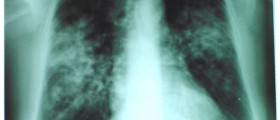
The parotid glands are paired organs and the major salivary glands in the human body. Their ducts are situated on either side of the dental occlusal planes. When functioning adequately, the parotid glands produce sufficient amount of saliva necessary for chewing and food preparation for swallowing. The flow of the saliva does not allow ascending infections of the glands.
Inflammation of the parotid glands is medically known as parotitis. Diagnosing this condition can be rather challenging since the symptoms and signs of inflammation may range from modest to prostrating. Parotitis can be associated with different causes. It may, for example, be or bacterial or viral origin or associated with autoimmune diseases. However, the symptoms may be similar in spite or different causes that have led to parotitis.
Acute Infectious Parotitis
Acute bacterial parotitis most commonly develops due to Staphylococcus aureus. Other bacteria may cause infection as well. It is, for example, possible to even develop parotitis due to infection with Mycobacterium tuberculosis.
Acute viral parotitis, also known as mumps, is definitely the most common form of acute inflammation of the gland. Today, thanks to routine vaccination, this infection rarely occurs. And finally, even though people suffering from HIV tend to develop generalized lymphadenomegaly, enlargement of the parotid gland is not so frequent, but is still possible.
Parotitis Associated with Autoimmune Diseases
This form of parotitis is chronic and may develop as a result of different autoimmune illnesses.
Sjögren's syndrome is responsible for chronic inflammation of salivary glands. The condition predominantly affects women and is of unknown origin. Mikulicz's disease is another culprit of enlarged parotid gland. It is neither associated with tuberculosis and leukemia nor any other identifiable illness.
Acute Parotitis Associated with Blockage
Blockage of the main parotid duct does not allow saliva to be excreted into the oral cavity. This is a frequent cause do acute parotitis. The inflammation of the gland is closely related to secondary bacterial infection. The blockage may be caused by a salivary stone and benign or malignant tumors.Other Causes of Parotitis
Apart from the previously mentioned parotitis may be associated with other conditions which tend not to occur frequently, but still may be responsible for inflammation.
Chronic nonspecific parotitis lasts for several days but its etiology remains unidentified. Recurrent parotitis of childhood is an unusual syndrome. It leads to recurrent inflammation of the gland which does not last longer than 7 days (sometimes may linger up to 2-3 weeks). Severe forms of this inflammation require surgical removal of the affected gland.
Sialadenosis is diffuse enlargement of the parotid glands that generally affects people who are already suffering from some other conditions such as diabetes, nutritional disorders (pellagra, Kwashiorkor etc.) or are treated with some medications (guanethidine, thioridazine or isoprenaline).
Sarcoidosis affects different organs (the lugs, skin and lymph nodes) and may sometimes cause inflammation of salivary glands including the parotid gland.
Pneumoparotitis is a rare condition caused by entrance of air inside the gland through the duct orifice. It is common among wind instrument players.
And finally, in people in whom several lymph nodes reside inside the parotid gland, inflammation of these lymph nodes may induce parotid gland enlargement.

















Your thoughts on this
Loading...